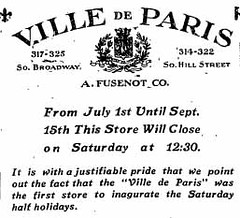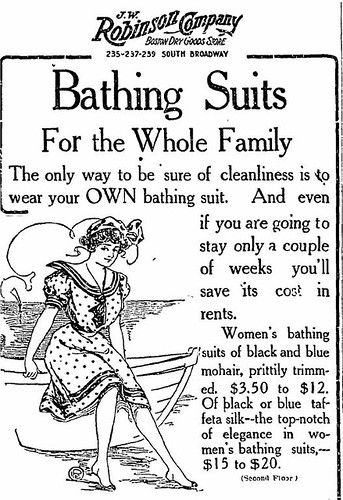 June 19, 1907
June 19, 1907
Los Angeles
What shall we do with the insane? Don’t give them drugs... give them music! (Well, some music).
Dr. E.C. Dent of the hospital for women on Ward’s Island in New York says: “I firmly believe in the curative power of music for insane patients and those who suffer from nervous diseases, but I do not say that music in itself is a cure. It is true that music is now a regular part of the treatment in this hospital systematically employed in reaching and stimulating the brain.”
The musical selections are important, Dent says, because “popular airs ... were useless or injurious in the case of a patient accustomed to the classics while the classics would be entirely without effect on the brain of an uneducated person.”
For simple mania, Dent says, slow, dreamy music is best while someone with melancholia is best treated with a stirring air. Dent’s assistant Miss Vescelius has classified music much like drugs: stimulants, sedatives, bromides, narcotics and tonics.
Dent uses Franz’s Liszt’s Hungarian Rhapsody No. 2 as a stimulant (predating Warner Bros.’ cartoons by several decades), and Felix Mendelssohn’s “On Wings of Song” as a sedative. Franz Schubert’s “Ave Maria” is a narcotic and marches and bright waltzes are considered as tonics.
“One day a dear friend mentally and physically at the lowest ebb lay in a half-fainting condition on a lounge as I sat at the piano, singing. Through a sudden impulse, I broke into the old gem ‘She Touched the Hem of His Garment,’ knowing it to be a favorite of the invalid. When I had finished she was standing by my side, with bright eyes and cheeks flushed. ‘I am revived; I am well,’ she said as she grasped me. And it was true that from that hour she improved and rapidly recovered.”
“The time will come when discordant tones in the sick room will be recognized as a crime, just as heinous as giving the sick adulterated drugs or impure food,” Vescelius said.
Although Dent doesn’t give an example of bromides, one might easily suggest, for starters, Tchaikovsky’s “1812 Overture” and Vivaldi’s “The Four Seasons.” I wonder what they would have thought of Steve Reich’s “Come Out.”
Lmharnisch.com
Lmharnisch.blogspot.com
Labels: 1907, Black Dahlia, Books and authors, Crime and Courts, Food and Drink, LAPD, Music, Streetcars









